Affiliate disclosure: This post may contain affiliate links. Please see our Privacy Policy.
Thimbleberries (Rubus odoratus or Rubus parviflorus), also known as flowering raspberries, are a delightful addition to any garden. If you’re looking for a berry that offers an intense, raspberry-like flavor but with a sweeter, more fragrant kick, thimbleberries might be the perfect plant for you. These wild berries are loved by foragers and gardeners alike for their soft texture and distinct taste—sweet, tart, and almost candy-like. While they may not produce in the same abundance as traditional raspberries, their unique flavor and beauty make them well worth the effort.
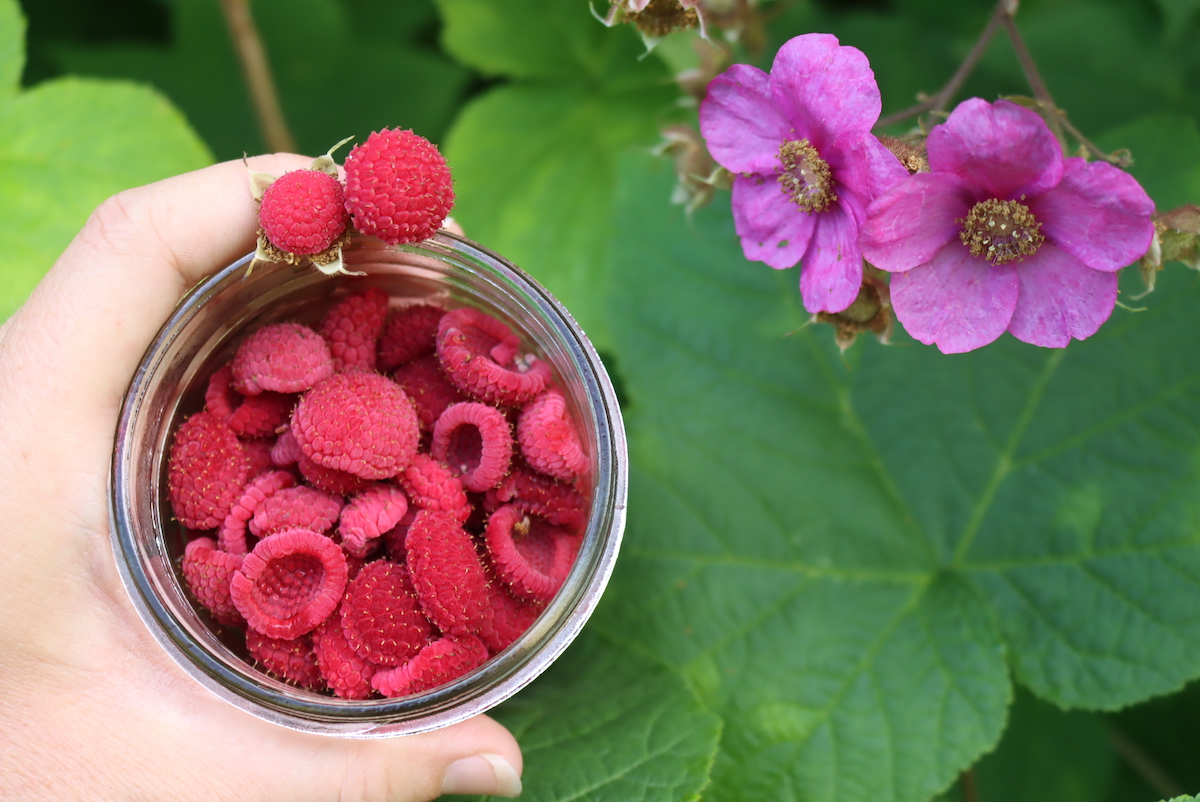
Thimbleberries are my daughter’s favorite fruit, and she eagerly waits all year for our crop to ripen. It could be that they’re sparse bearers, meaning that every berry is precious, but even I have to admit that they’re downright delicious.
These days, I get maybe one or two berries a season, and she hunts the rest down like a hawk, picking them just as they ripen.
Unlike raspberries which come in all at once in a big flush, thimbleberries ripen just a few berries at a time over the whole season. It makes it nearly impossible to pick enough for a thimbleberry jam, but also means that you get months of snacking on just a handful of fresh fruit every day.
While you can forage wild thimbleberries, growing them at home is a much better way to ensure a steady supply for my thimbleberry-loving little ones.
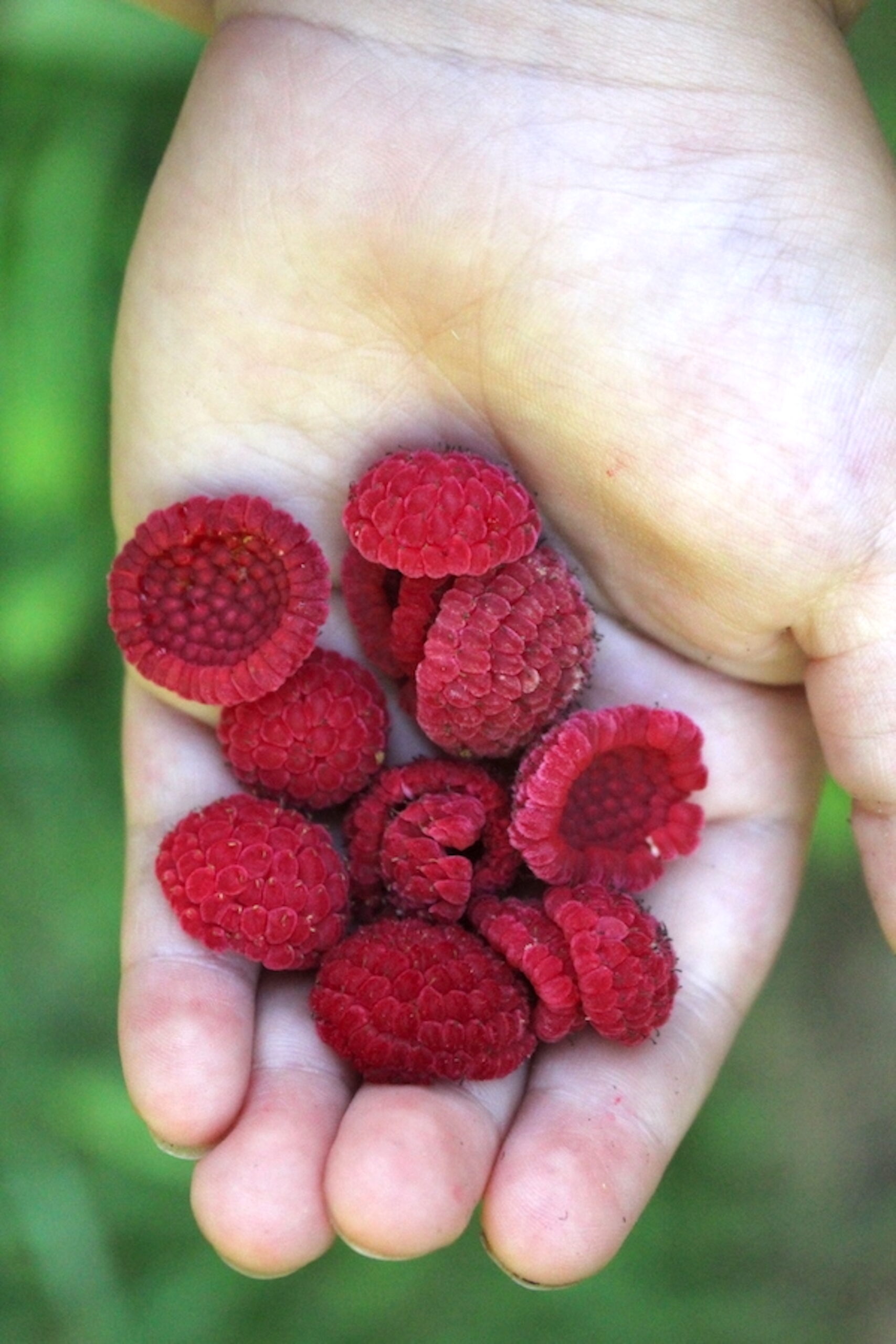
What Do Thimbleberries Taste Like?
Thimbleberries have a soft, velvety texture and an incredibly vibrant taste that is often described as raspberry-flavored candy. Their flavor is more concentrated and intense than raspberries—if you were to imagine a candy made of raspberries, that’s what thimbleberries taste like. They ripen slowly, producing just a few berries at a time, which makes them a rare treat, but that also means you get months of fresh fruit as they ripen intermittently throughout the season.
The berries are so delicate that they begin to spoil just hours after being picked. That’s one of the reasons they’re rarely seen in grocery stores but are worth cultivating at home where you can enjoy their fresh sweetness straight from the garden.
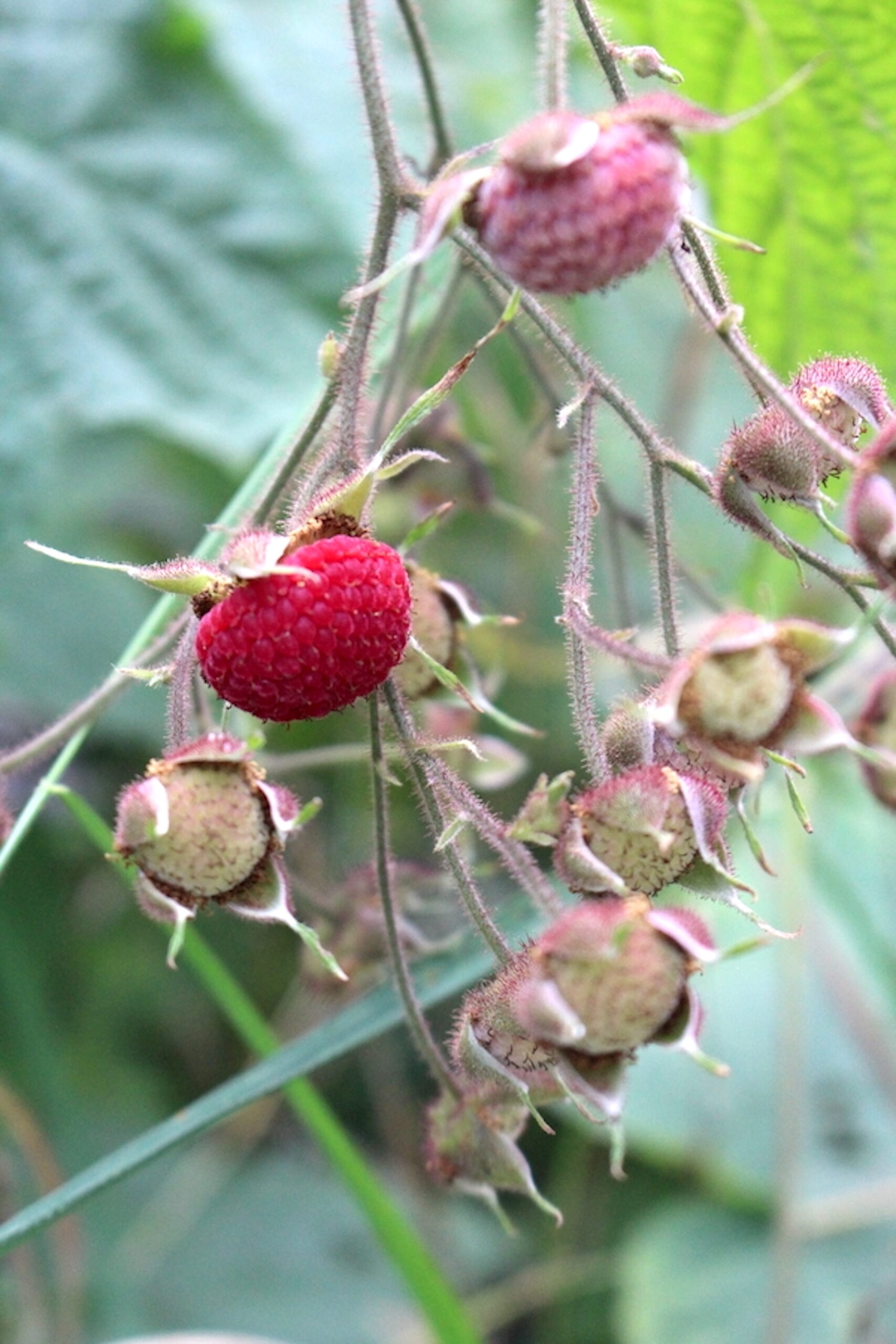
Thimbleberry Varieties
There are two main species of thimbleberry that are commonly grown:
- Western Thimbleberry (Rubus parviflorus) – Native to the Pacific Northwest and Canada, this variety has white flowers and doesn’t have the strong fragrance that the eastern variety does. While I haven’t grown this one personally, it’s said to have similar growth habits and flavor, though some gardeners claim it produces slightly larger crops.
- Eastern Thimbleberry (Rubus odoratus) – This is the variety native to the eastern United States and is also known as the purple-flowering raspberry. It’s typically found along woodland edges, roadsides, and streams, and its flowers are vibrant, pink, and highly fragrant, attracting pollinators in droves. I’ve had the pleasure of growing this variety in Vermont, where they thrive in my native bee garden.
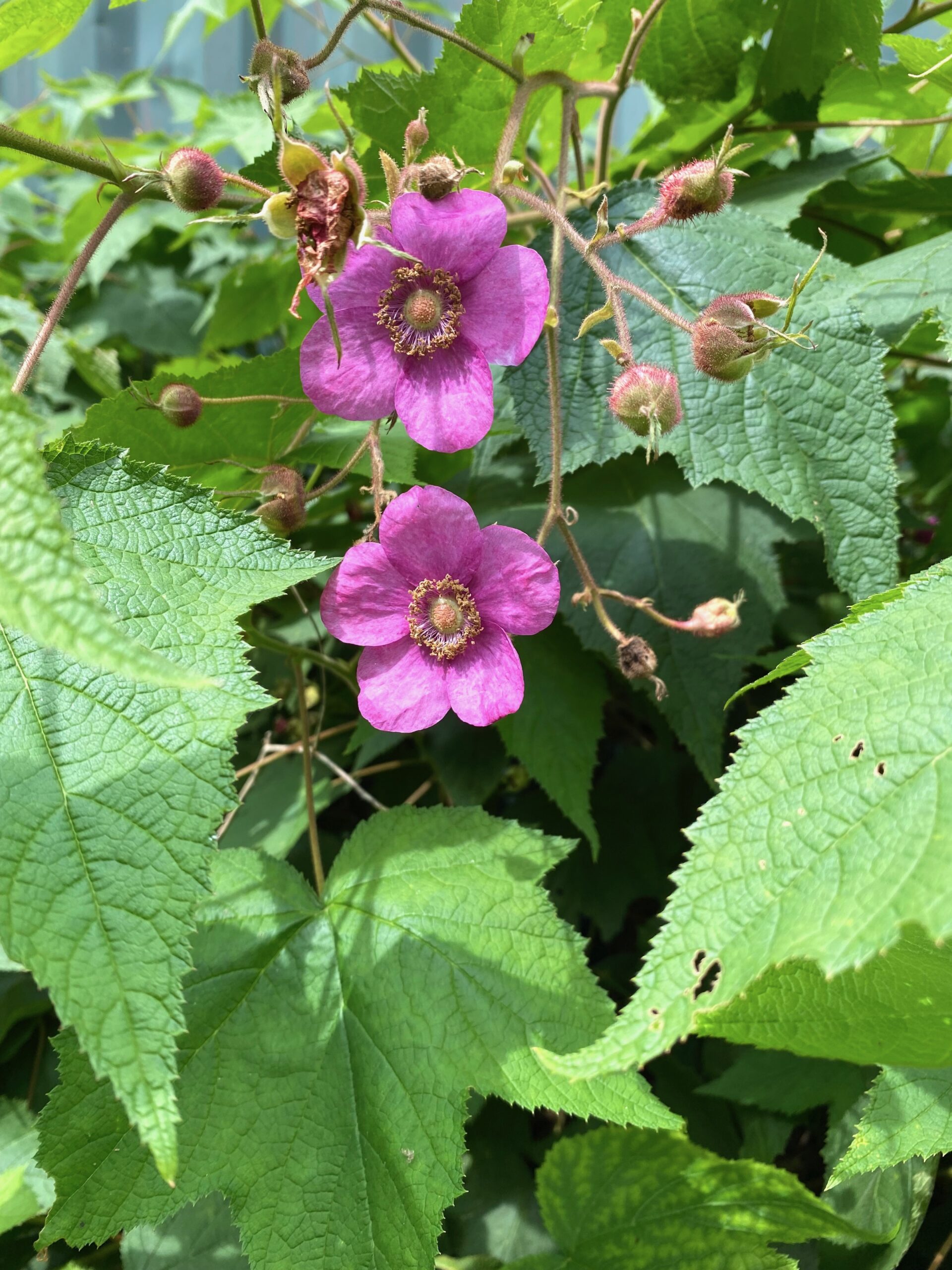
How to Grow Thimbleberries
If you’re thinking about adding thimbleberries to your garden, here’s what you need to know:
Planting from Seed or Cuttings
While it’s possible to grow thimbleberries from seed, they can be a bit tricky to propagate. To germinate the seeds, you need to simulate the natural conditions they experience in the wild. This means scarifying and cold-stratifying the seeds:
- Scarification involves slightly damaging the seed coat to help stimulate germination. You can do this by placing the seeds in a blender with a little water and pulsing them for a few seconds.
- Cold Stratification requires placing the seeds in the freezer for several months before planting, mimicking the cold winter months they would naturally endure.
For many gardeners, starting thimbleberries from cuttings or dormant rhizome divisions is a simpler and faster option. Thimbleberries spread through underground rhizomes, so you can dig up and divide the root systems every few years to propagate new plants.
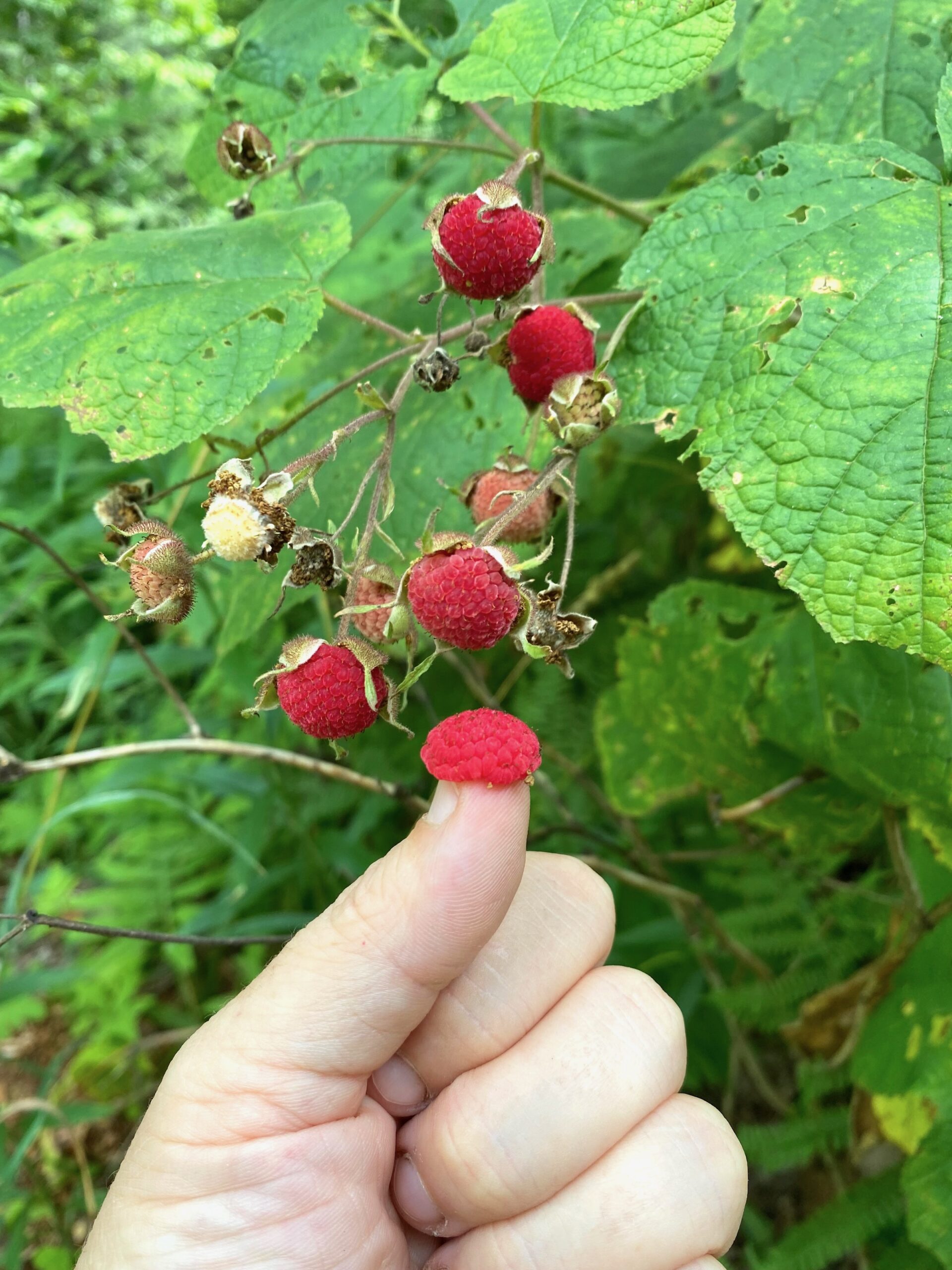
Where to Plant Thimbleberries
Thimbleberries grow into large shrubs, typically reaching 6 to 8 feet tall and about 3 feet wide. Because of their size, it’s essential to give them enough space to spread. If planting in rows, space the plants 8 feet apart and 3 feet between each plant.
They thrive in moist, well-drained soil—ideal for spots near streams, drainage ditches, or even the dripline of a house where moisture is consistently available. Thimbleberries like slightly acidic soils, so consider testing your soil’s pH if you’re unsure.
Care and Maintenance
One of the advantages of growing thimbleberries is that they require very little maintenance once established. Unlike raspberries, thimbleberries don’t need to be trellised or pruned. Let the plants grow freely to promote healthy production.
- Watering: Keep the soil evenly moist but not soggy. If you live in a particularly dry climate, you may need to water more frequently, but avoid letting the plants sit in waterlogged conditions.
- Fertilizing: Thimbleberries don’t need much fertilizer, as they are wild plants adapted to nutrient-poor soils. If you do add compost, ensure it is well-decomposed. Fresh compost can damage their delicate roots.
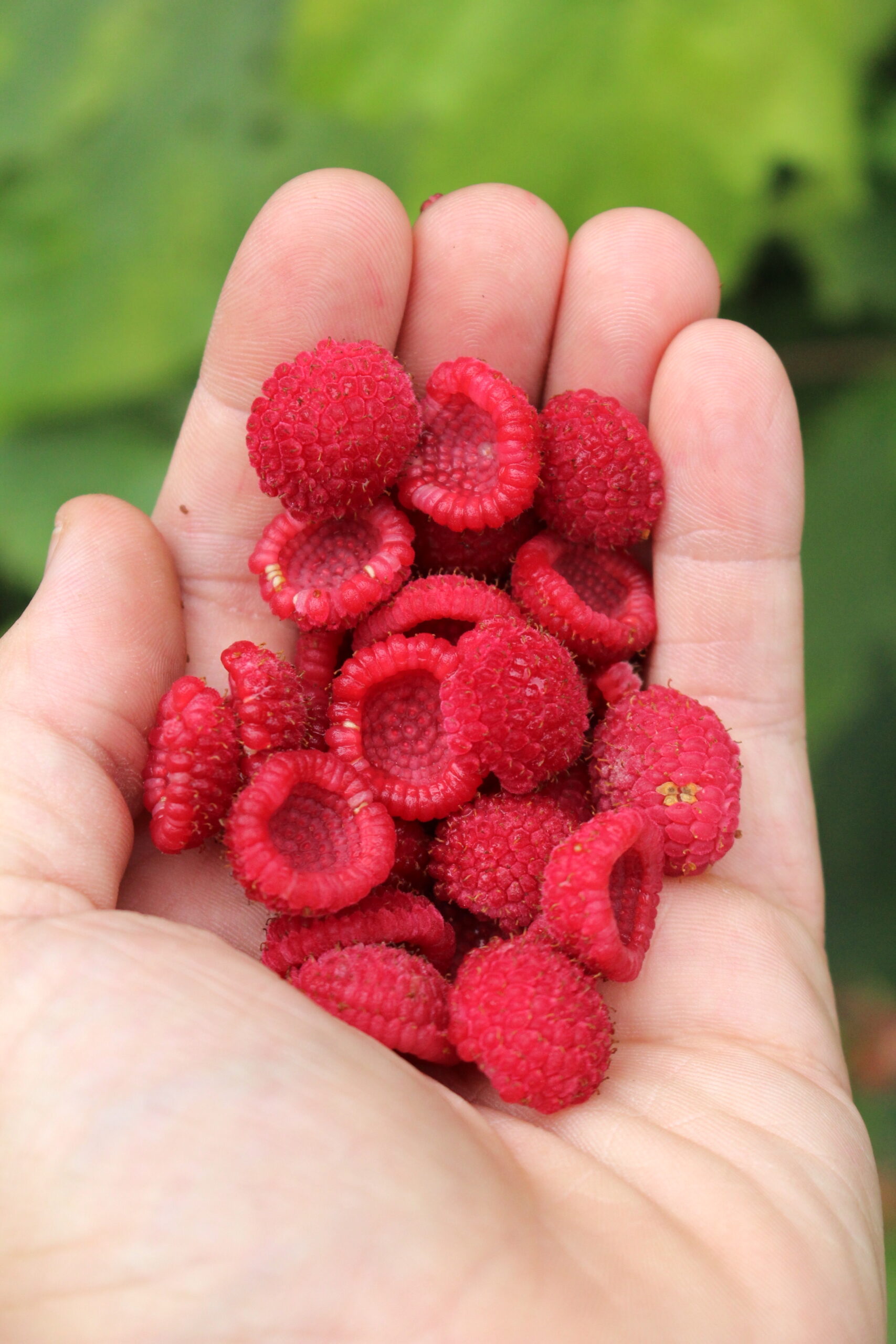
Harvesting Thimbleberries
Unlike raspberries, which ripen all at once, thimbleberries ripen sporadically throughout the growing season. This means you’ll get just a few berries at a time over several months, making them a real treat to pick and eat fresh.
Thimbleberries are also harvested a little differently than raspberries. Their soft, fragile nature makes them easy to bruise, so pick them gently and only when they’re fully ripe.
Since they spoil quickly, it’s best to enjoy them right away or preserve them immediately.
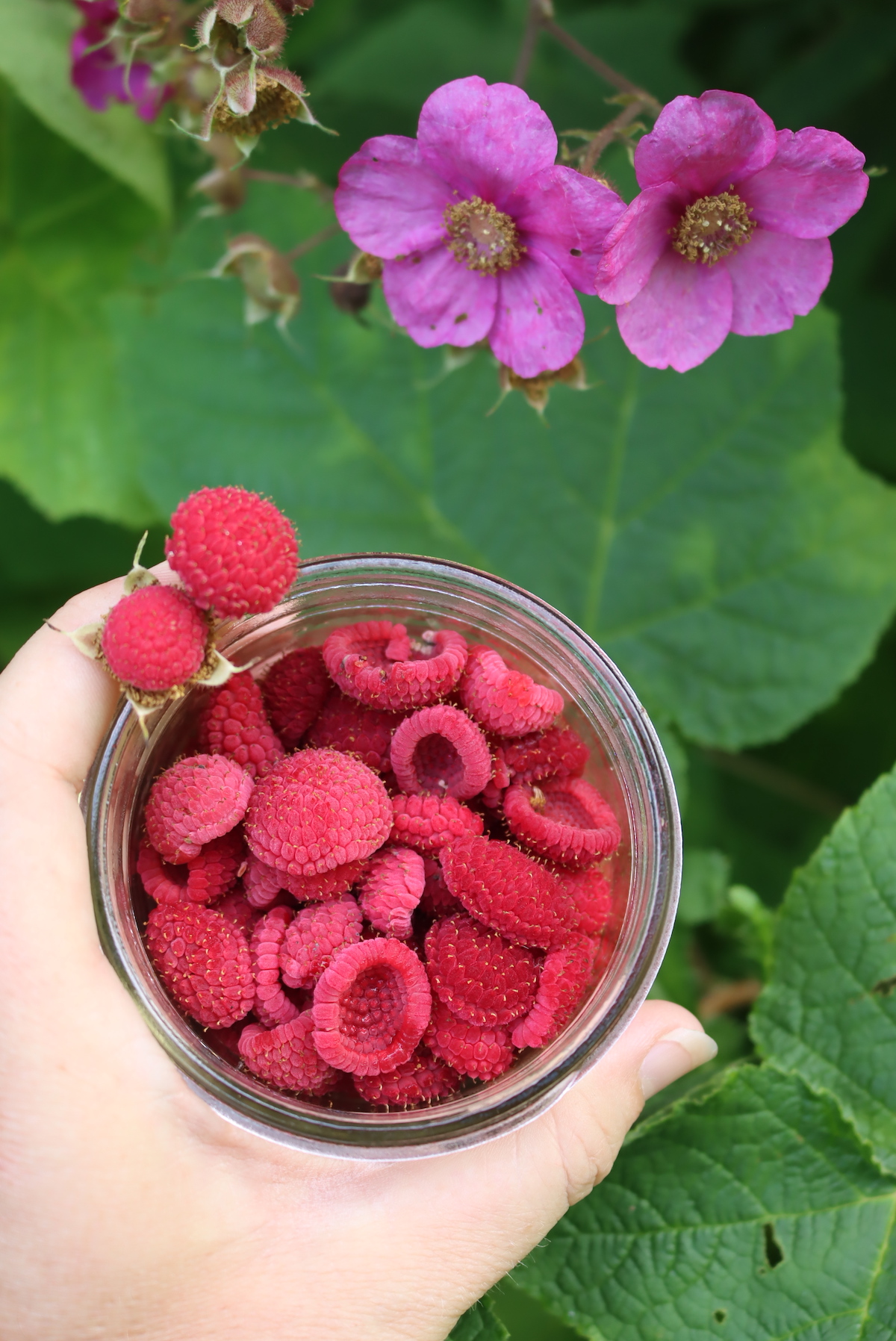
Thimbleberries and Wildlife
Thimbleberries are not just for humans—they’re a favorite of many pollinators. The large flowers attract bees, particularly native bees, who can often be found buzzing around inside the blossoms.
Additionally, the plants support a number of beneficial creatures, including the yellow-banded sphinx moth, a fascinating bee mimic that looks like a tiny hummingbird or large bumblebee.
It’s not uncommon to see multiple tiny native bees all bumbling around a single flower in season, especially with the highly fragrant eastern variety.
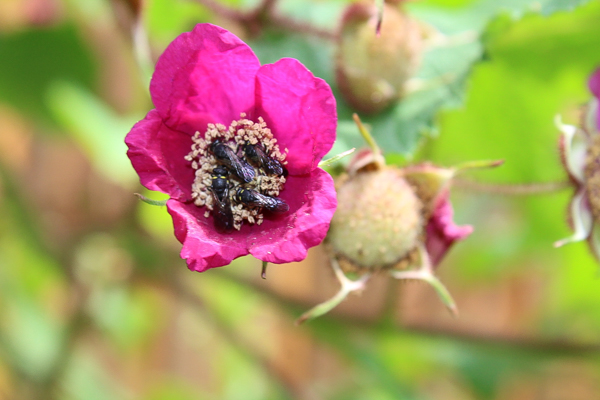
How to Use Thimbleberries
The delicate fruit of the thimbleberry plant is best enjoyed fresh. They’re perfect for snacking right off the bush while hiking or strolling through the garden. If you find yourself with a larger harvest, you can make thimbleberry jam, though this is easier with the larger crops from the western variety. In the eastern version, you’ll likely find yourself collecting just a handful at a time.
Another fun way to use thimbleberries is in a vinaigrette, where their sweet-tart flavor can add a unique twist to your salads or marinades. The fresh shoots of the plant can be eaten in early spring and are often compared to asparagus in flavor and texture. You can cook them fresh, or add them to stir-fries and omelets.
If I promise my daughter a thimbleberry jam, she’ll go to work collecting a few pints, and we can preserve them, but this only works if you’re growing quite a few. (Or, you preserve them as they ripen in the freezer until you have enough for jam.)
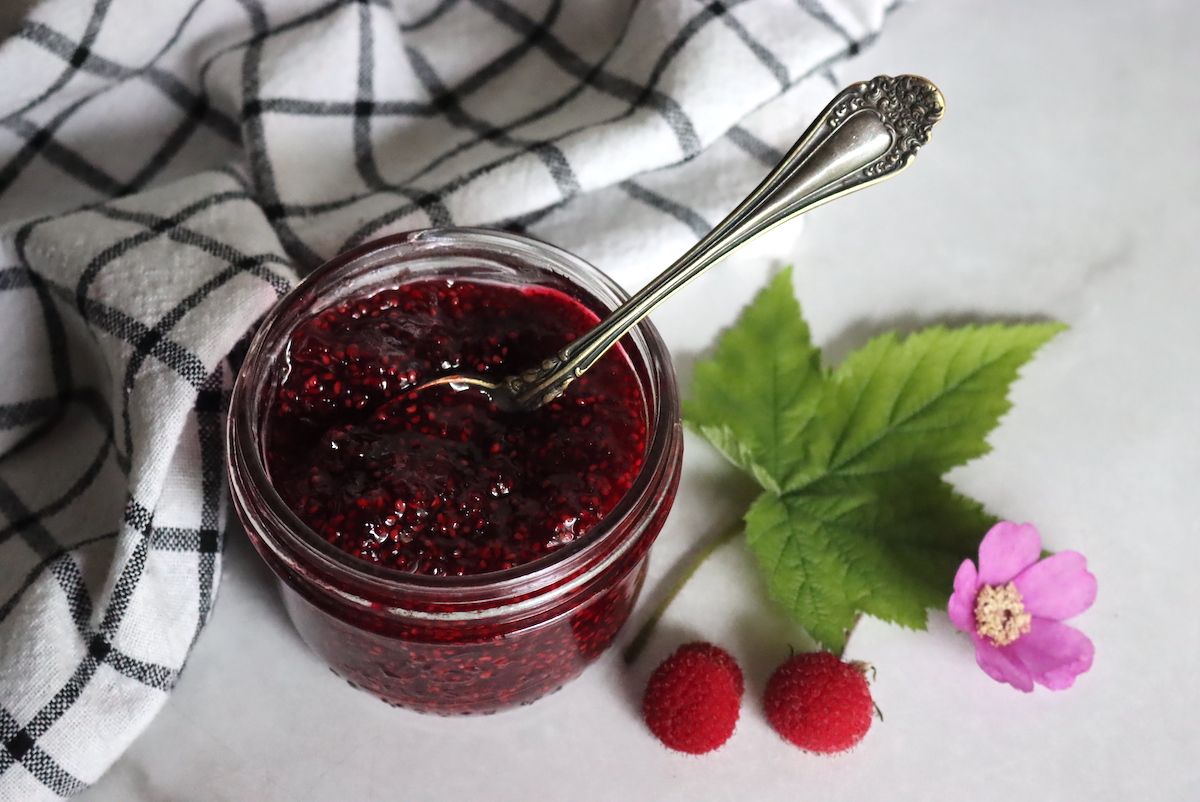
Medicinal Uses of Thimbleberries
Beyond simply being delicious, thimbleberries also have traditional medicinal uses.
Both thimbleberry species are rich in Vitamin C, which makes them beneficial for your immune system. Native Americans have used thimbleberries for centuries to treat a variety of ailments. The leaves can be made into a tea to help with digestive issues like nausea and diarrhea, while poultices made from the leaves were used to treat burns, cuts, and skin irritations. The roots were brewed into a tea for digestive support.
Thimbleberry leaves are also useful for more practical purposes, such as making emergency toilet paper when you’re out hiking or camping. Their large, soft texture makes them surprisingly effective and gentle on the skin.
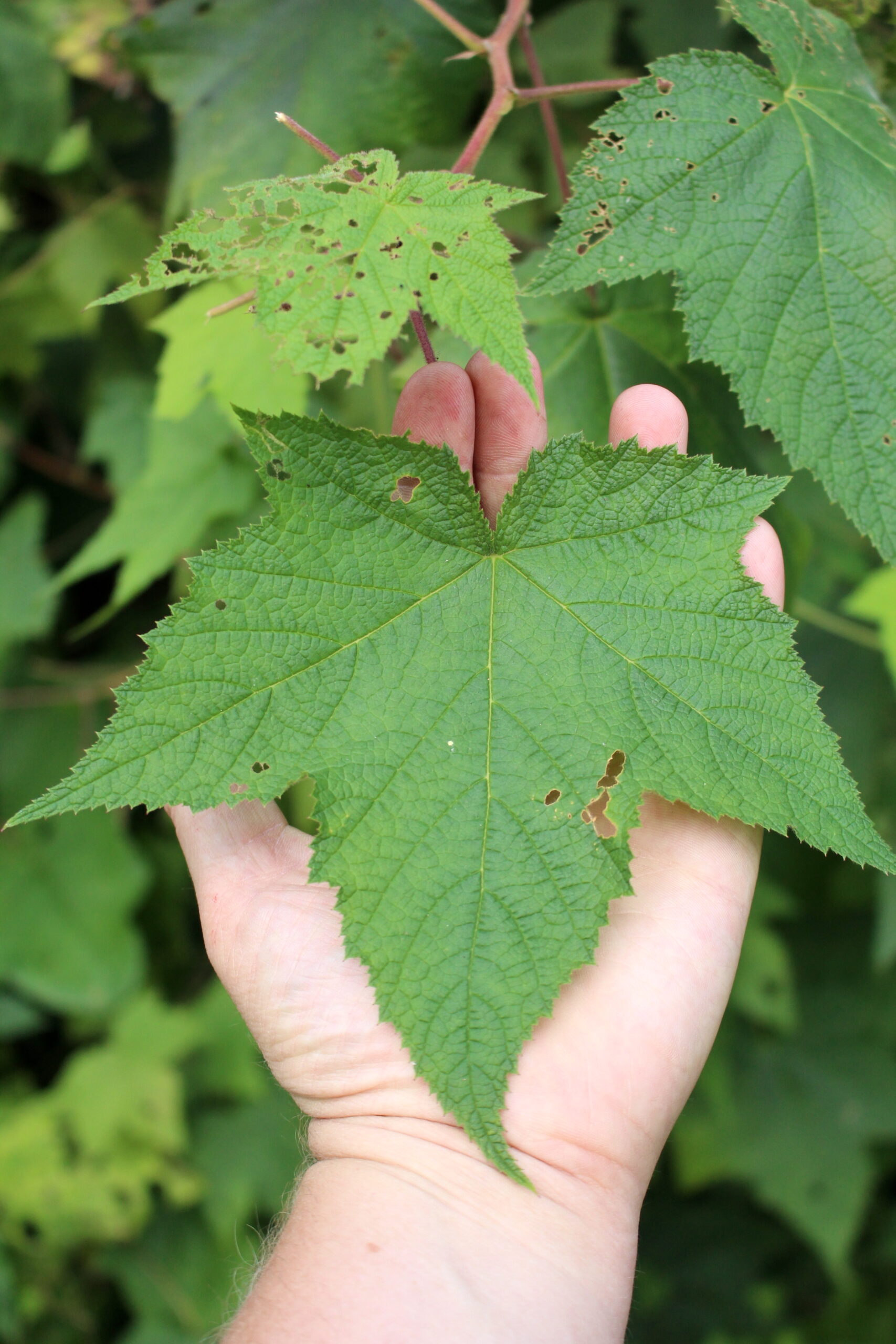
Thimbleberries are a fantastic addition to any garden, whether you’re looking to harvest the delicious fruit, enjoy their beautiful flowers, or attract pollinators to your space. While they do require a little patience to grow, their unique taste and low-maintenance nature make them well worth the effort.
Whether you’re a seasoned gardener or a foraging enthusiast, adding thimbleberries to your landscape is sure to bring sweet rewards for years to come.
Unique Fruits
Looking to add more unique fruit to your garden?
- How to Grow Honeyberries
- How to Grow Ground Cherries
- How to Grow Cornelian Cherry
- How to Grow Nanking Cherry
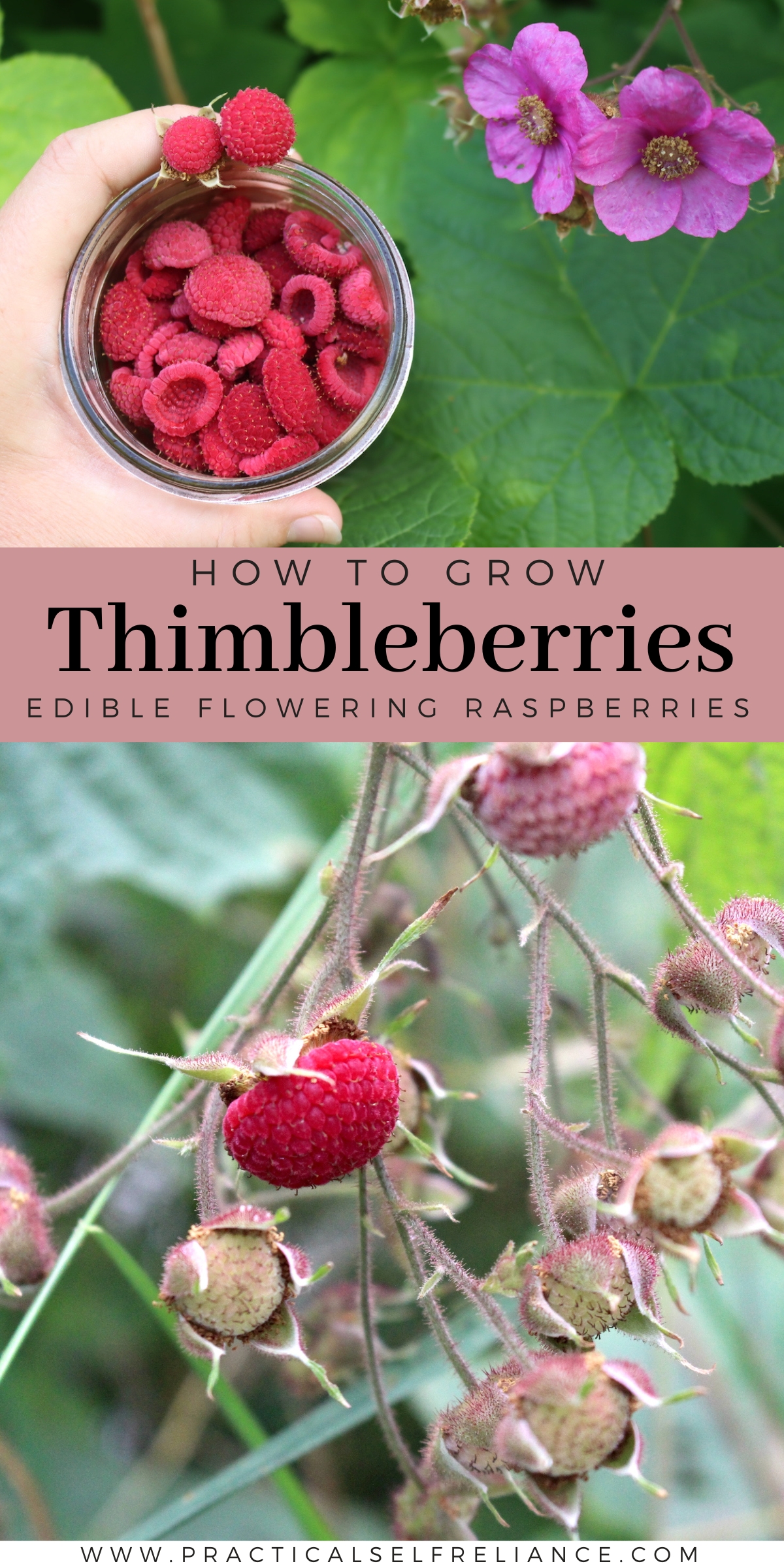
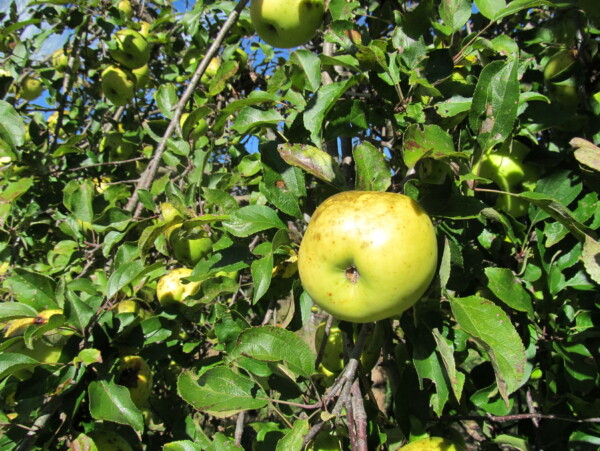
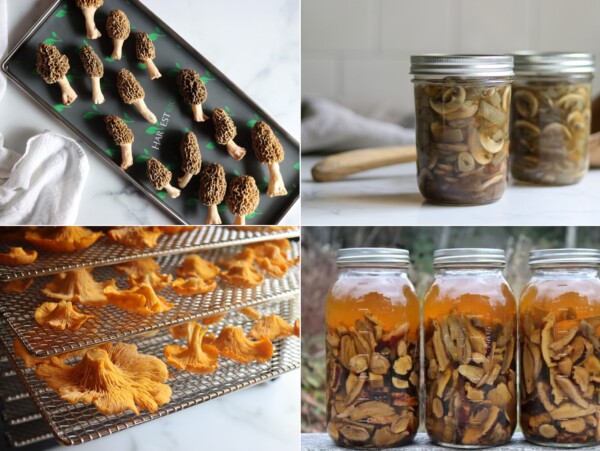
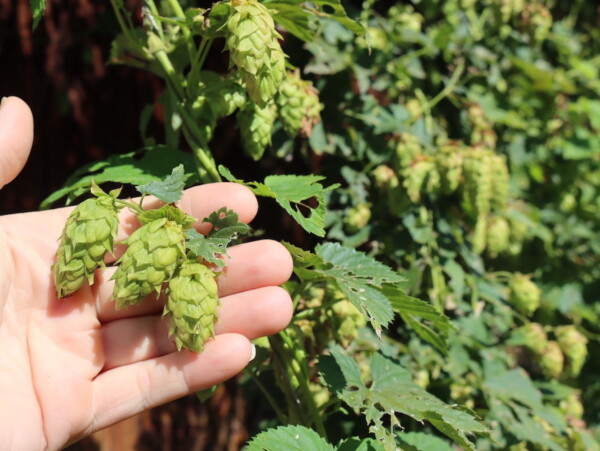
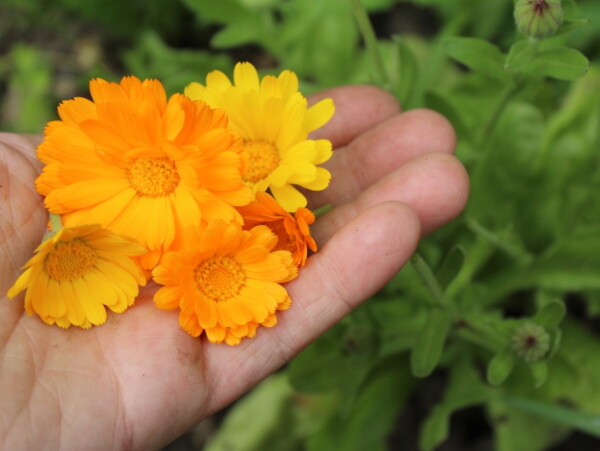










We would love to plant some of these in our garden. Do you have any suggestions on where to find some seeds or starts? We’re in the Ohio valley. Thanks for the article!
It looks like there are several places on Etsy selling the seeds. I would just be sure that you read the reviews and make sure that it is a reputable grower.
I have found a wild patch/range for rubus odoratus here in TN. Was thrilled to discover this as I grew up in the northern region with the rubus parviflorus. Nice article, thank you!
You’re very welcome. So glad you enjoyed it.
Thanks for the info on Thimbleberries! As a long time British Columbia resident I’m well acquainted with this plant – although oddly, the white-flowered thimbleberry plants that grow profusely around our interior rainforest are very fragrant. My wild yard is surrounded by 100’s of Thimbleberry plants and the air in May is perfumed with their scent – even the leaves are sweet-smelling. I had a hunch the whole plant was useful; now I know.
Hi Ashley, I enjoy your writings on wild plants. As you know, the same common name (such as thimbleberry) can refer to different plants in different areas. Thimbleberries with unscented, white flowers are Rubus parviflorus, and thimbleberries with fragrant, purple flowers are Rubus odoratus. The fruit on both look very similar. Harry
Thank you Harry! I’ve gone back and corrected the article.
I am greatly intrigued. Do you think they could withstand being pressure canned?
They crumble apart pretty easily and hold together generally less well than regular raspberries. I can regular raspberries (water bath) which hold together pretty well, but I haven’t tried thimbleberries. I imagine they’d fall apart, but still be delicious.
I’ve had thimbleberries taking over my tiny yard since I transplanted one tiny seedling there a few years back. The thing is, they never bloom. Any advice? I think they are established enough now that they should be producing, but they never do.
I don’t know if they need another one nearby or not, but one thing I’ve been having to do with my fruit is take a small brush and hand-pollinate. Bees should be out by the time these bloom, but if you live in a cold spring area or have a bee shortage, maybe not.
I have been growing thimbleberries for years. I have never had a single flower. I read somewhere that they only flower on “second year canes,” that is, canes that grew directly out of canes, as opposed to the ones that pop up from roots. Most of mine grow from the roots, but I have had several years now where some have grown from pre-existing canes, and still no flowers. I would love to know if anyone has tips on how to make them flower. The tip about pollinating them in case bees don’t do the job is worthless to me. In order to pollinate them, you have to get flowers first!
Thimbleberries produce best on canes that are 2 to 3 years old. They can also benefit from some well aged manure. Have you been fertilizing your plants at all?
Good tip about using the leaves as toilet paper in the age of COVID-19!
Thank you! Not just for the info on your site, but also for the small ad insert that indroduced me to PrimitiveSelfReliance. How to make an arrow? And the bow. How to eat a Pine tree? I can hardly wait! So, again, THANKS!
going to the thimbleberry new moon teachings on thursday
just found this fruit and have ordered some from a small surpplier in england,
I like to try different fruits, I grow saskatoons and aronia berries, things that are not the normal fruit to grow on the allotment.
thanks for the infomation you have put on your website.